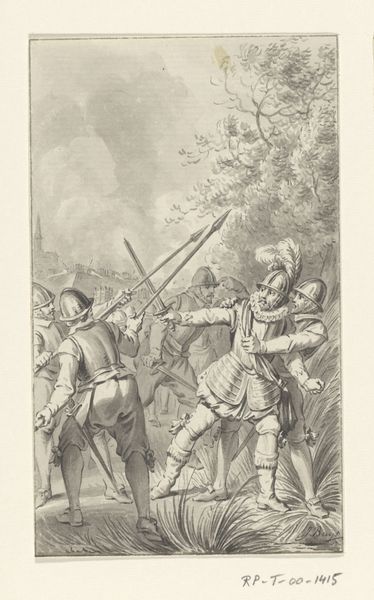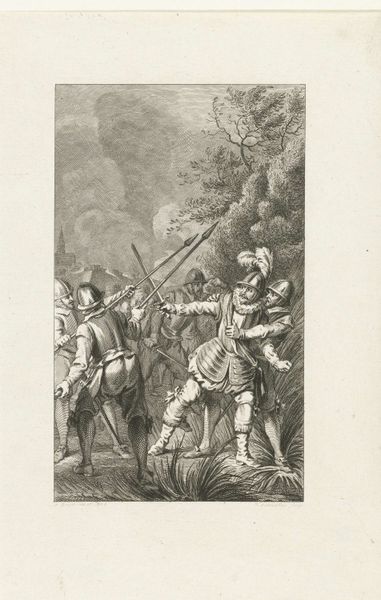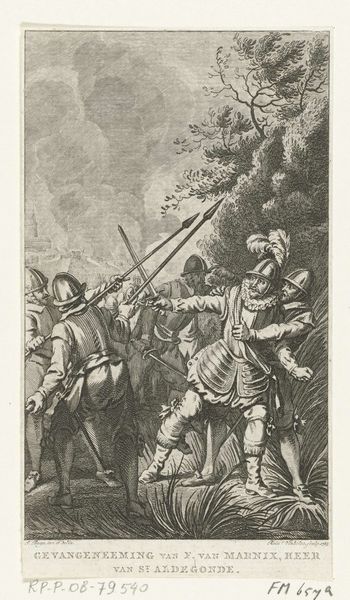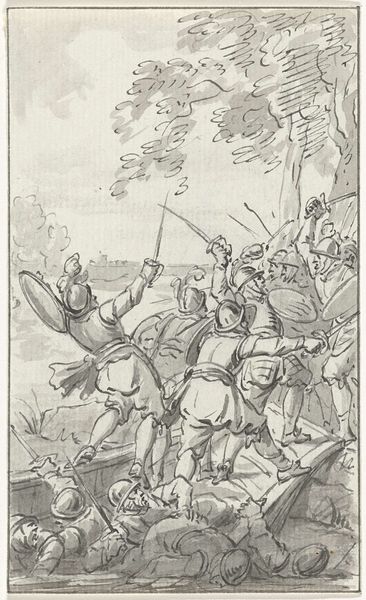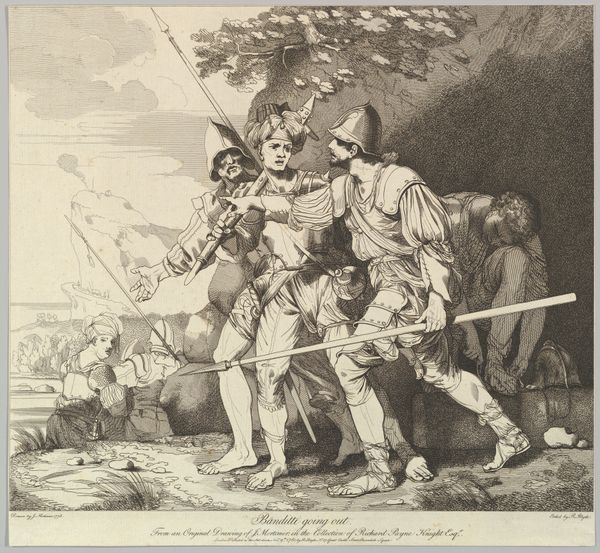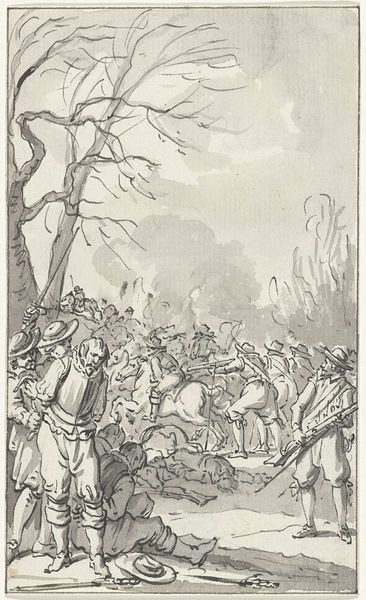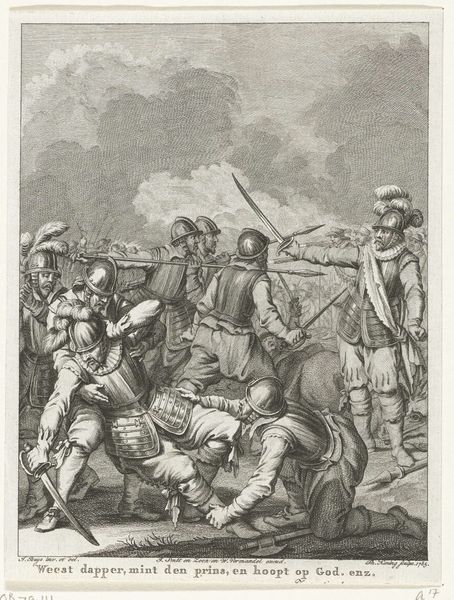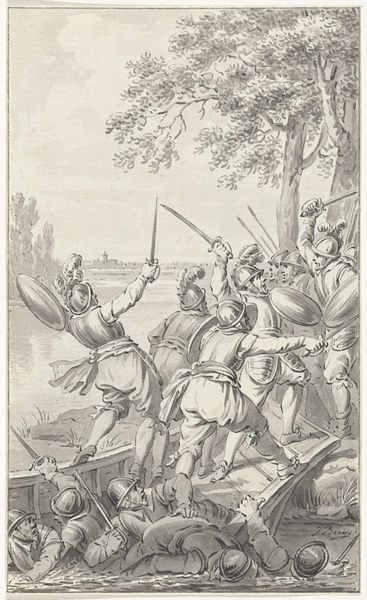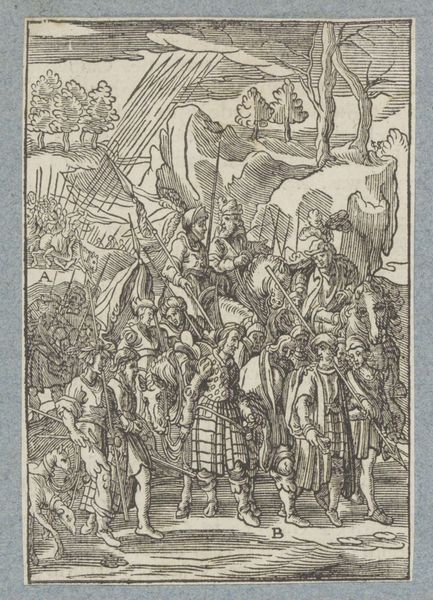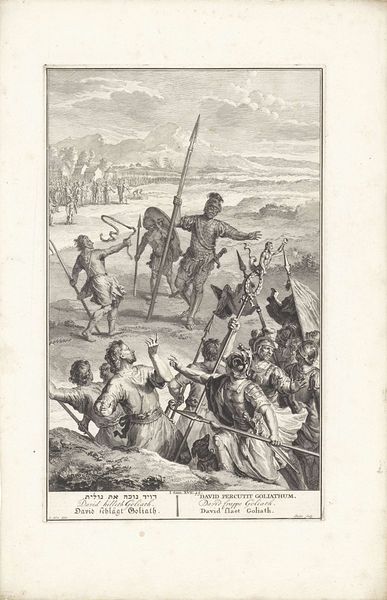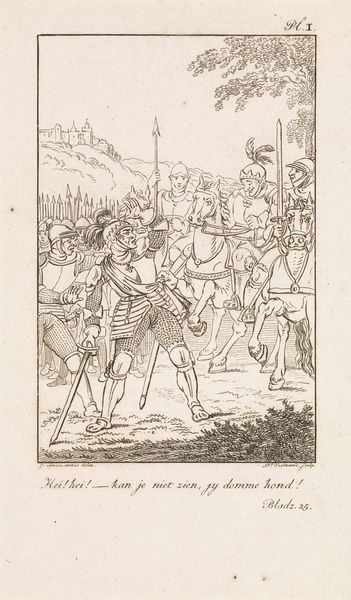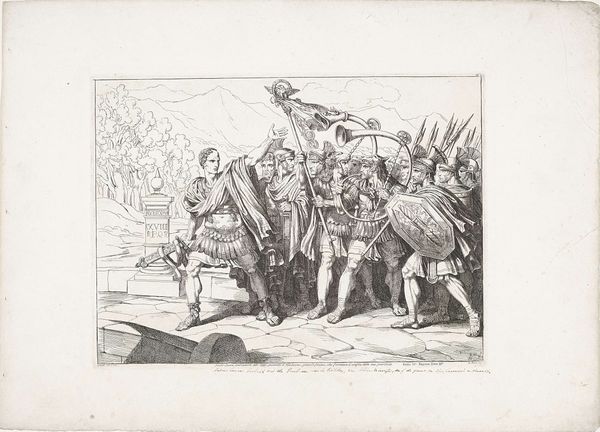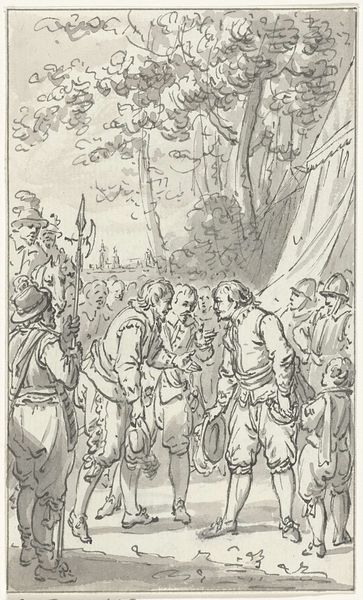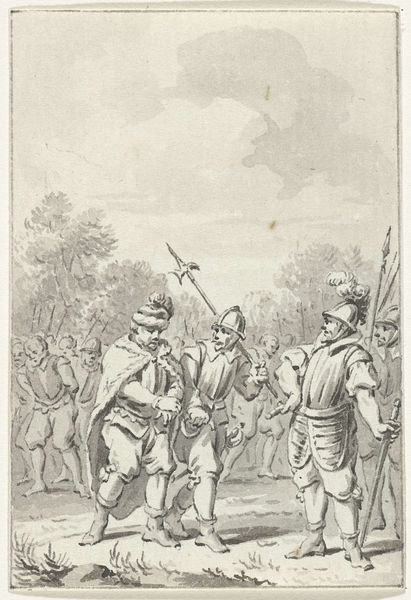
Gevangenneming van Philips van Marnix door de Spanjaarden bij Maaslandsluis, 1573 1783 - 1785
0:00
0:00
Dimensions: height 150 mm, width 90 mm
Copyright: Rijks Museum: Open Domain
Editor: So, this drawing is titled "Gevangenneming van Philips van Marnix door de Spanjaarden bij Maaslandsluis, 1573," created by Jacobus Buys between 1783 and 1785. It’s a pen and ink drawing depicting a historical event, full of Baroque dynamism. It looks like chaos erupting. What strikes you most about this piece? Curator: The fascinating thing about a drawing like this, made over two centuries after the depicted event, is understanding its role in shaping Dutch national identity. This image, made during a period of burgeoning nationalism, actively participates in constructing a heroic narrative around the Dutch struggle for independence from Spain. What visual cues contribute to this heroic reading, would you say? Editor: The frantic energy of the soldiers, maybe? Philips van Marnix looks very dignified amidst it all, too, even in captivity. The composition almost makes him the focal point. Curator: Precisely! The artist uses the drama of the event, and Marnix’s stoic demeanor, to evoke a sense of national pride and resistance. It reinforces the image of the Dutch as courageous defenders of their freedom. Consider also, the drawing would likely have been reproduced as a print. How might this reproducibility impact the image's social and political impact? Editor: I suppose it would allow the image to circulate more widely, becoming ingrained in the popular imagination of Dutch history. It becomes a symbol, reproduced for different purposes. Curator: Exactly. So, we see this wasn't just an illustration; it played an active role in constructing a collective memory and promoting specific values about Dutch identity and the conflict with Spain. Editor: That's a different way to look at it than I ever considered! So the artwork served not just to document the event, but to shape how people viewed it. Curator: Indeed. It is a potent reminder that art isn’t just a reflection of history, but also a shaper of it.
Comments
No comments
Be the first to comment and join the conversation on the ultimate creative platform.
